Google Updates From 2000 to 2024
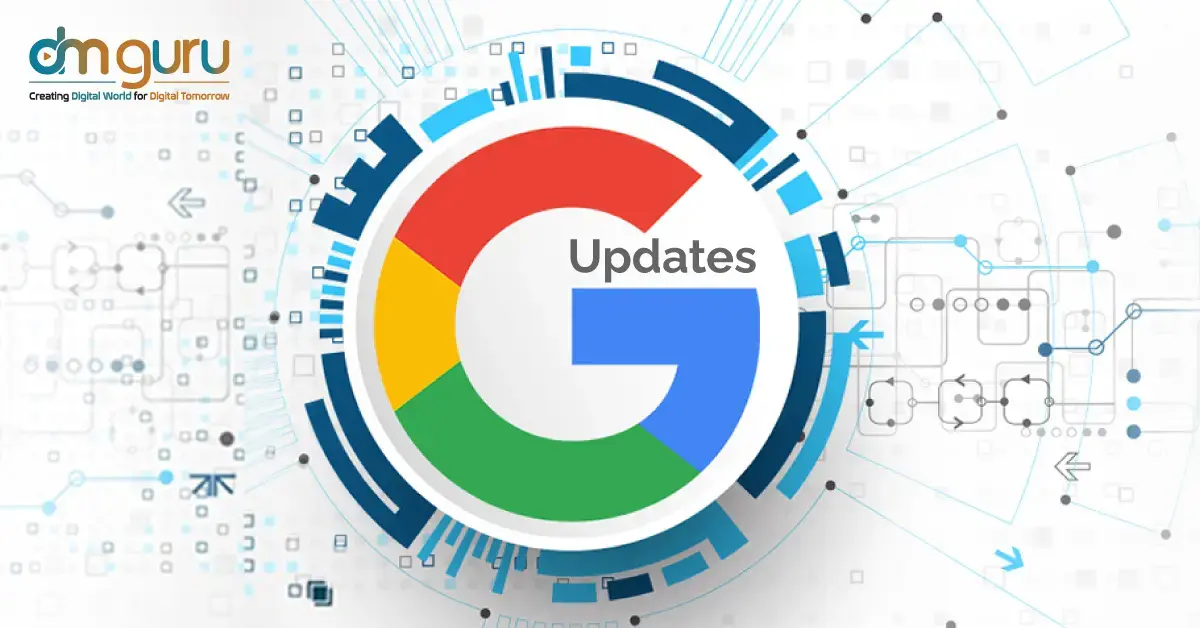
Know About Google Updates to Imporve your SEO Ranking
Google is an omnipresent influence in the modern world, influencing our ability to manage the massive amount of information available online. Google releases new versions and upgrades annually as part of its insatiable pursuit of innovation and improvement. This insatiable quest guarantees that users receive the greatest search results, remain up to date with the newest features, and navigate the digital world with ease. Essentially, Google is an ecosystem that is constantly developing to suit the demands of a world that is changing; it is more than just a search engine."
The user experience, website visibility, and search engine results are all subject to change with each algorithm update. Google's continuous refinement demonstrates its commitment to providing relevant and credible search results to people globally, ranging from significant fundamental updates to focused modifications meant to address particular concerns like spam or low-quality content.
These changes highlight the significance of maintaining flexibility and adaptability in digital strategy for companies that depend on their online presence. A proactive approach is necessary to keep up with the constantly changing algorithms, from monitoring analytics data to improving content and SEO strategies. Businesses may stay competitive in the ever-changing online search market by recognizing the effects of each update and modifying their strategies accordingly.
The Frequency of Google Updates can vary Greatly
Updates to Core Algorithms: These tremendous changes to Google's fundamental search algorithm may have an enormous impact on website rankings and search results. Google has historically published a number of major upgrades annually, usually a few times. The frequency and timing of these updates are subject to change and are not set in stone.
Small Changes & Adjustments: Google continuously modifies its algorithms in modest manners to enhance user experience and search quality. These shifts frequently come unexpectedly and can happen all the time.
Google regularly changes its features across a range of its products and services, including Ads, Maps, Search, and more. These upgrades may provide enhanced functionality, improvements to the user interface, and new features. Feature updates may come at different times based on the particular good or service.
Google publishes security updates on a regular basis to shield users from phishing, malware, and other online dangers. These updates may be released frequently and are usually applied as needed.
In general, Google updates can vary from significant changes to the core algorithm that occur a few times a year to smaller adjustments and feature upgrades that occur more frequently. Website owners, digital marketers, and anybody else who depends on Google's services for online exposure and success should pay close attention to these improvements.
To keep their websites optimized and visible in search results, marketers need to keep up with these algorithmic changes. In the ever-changing digital landscape, marketers may maintain brand prominence and accessibility for potential customers by adjusting their strategy in response to fluctuations in search results.
2024 Updates
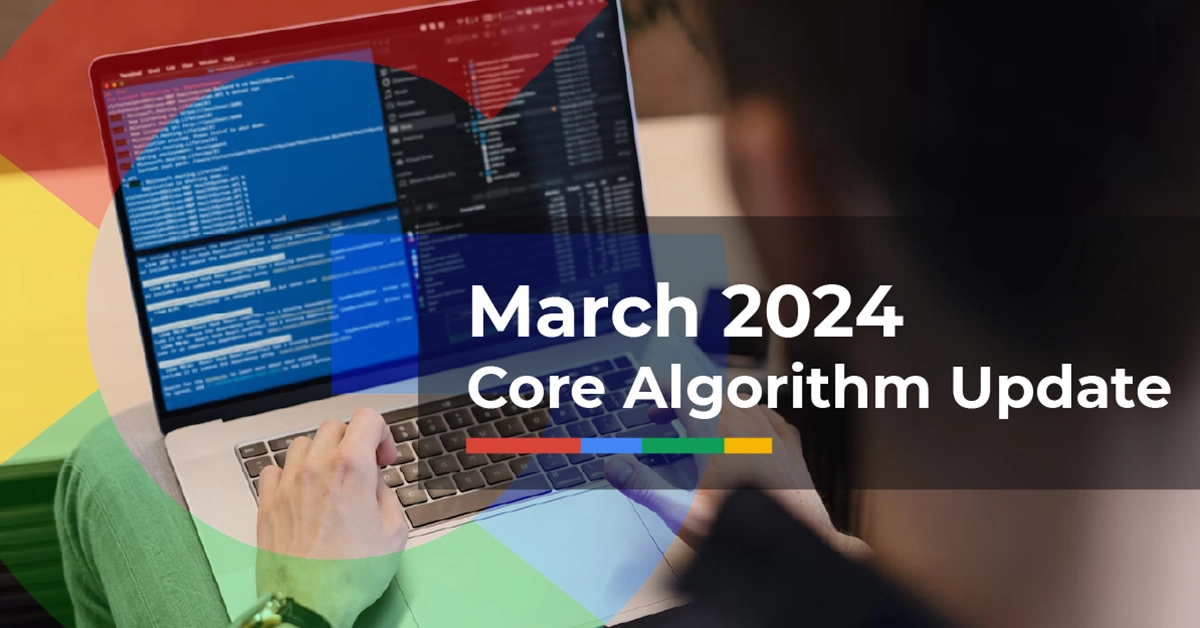
March 2024 Core Algorithm Update
In Google's continuous attempts to improve search quality and user experience, the March 2024 Core Algorithm Update is a major turning point. This upgrade, which was made available on March 5th, constitutes an extensive redesigned of several key components of Google's search algorithm.
According to Google's statement, this update's main goal is to improve search result quality by utilizing a variety of signals and strategies. Prioritizing useful information above content that puts search engine optimization (SEO) strategies ahead of user relevance is one important area of concentration.
Google predicts that the core upgrade installation procedure will take around a month, due to the complex nature and extent of the changes involved. Website owners and SEO specialists may see a rise in rankings during this time as the upgraded systems completely integrate and strengthen each other's effects.
It's critical for marketers and website owners to remain aware of the consequences of this major algorithm change. Maintaining or increasing search exposure in the post-update environment will require modifying SEO strategies in order to comply with Google's changing standards for high-quality content and user relevancy. Furthermore, tracking changes in search engine rankings and user interaction data can offer insightful information about how the update affects certain websites and content.
March 2024 Review Update
Google's March 2024 Spam Update, which was released in response to growing complaints around the amount of modified and low-quality information showing up in search engine results, focuses on three distinct categories of spam. The purpose of these new spam policies is to prevent different types of misuse and improve the relevance and quality of search results:
Expired Domain Abuse:
This refers to the practice of buying formerly well-known expired domains and using the same URL to build inferior websites. These websites exist only to take advantage of the previous domain's popularity and achieve high search engine rankings.
Scaled Content Abuse:
In an attempt to artificially boost their search ranks, some website owners create a lot of pages with manipulative or low-quality content. This can encompass the use of both human- and AI-generated content that has been produced expressly to manipulate search results.
Site Reputation Abuse:
This is the practice of adding low-quality third-party pages to otherwise accepted websites in an attempt to use the site's credibility to rank well on Google. Website owners are encouraged to prevent such content from being indexed by Google Search in order to comply with this policy.
Google is giving website owners until May 5, 2024, to ensure compliance with these spam policies by making the appropriate changes. By focusing on these deceptive strategies, Google hopes to enhance consumers' search experiences by highlighting relevant, high-quality material in its search results.
2023 Updates
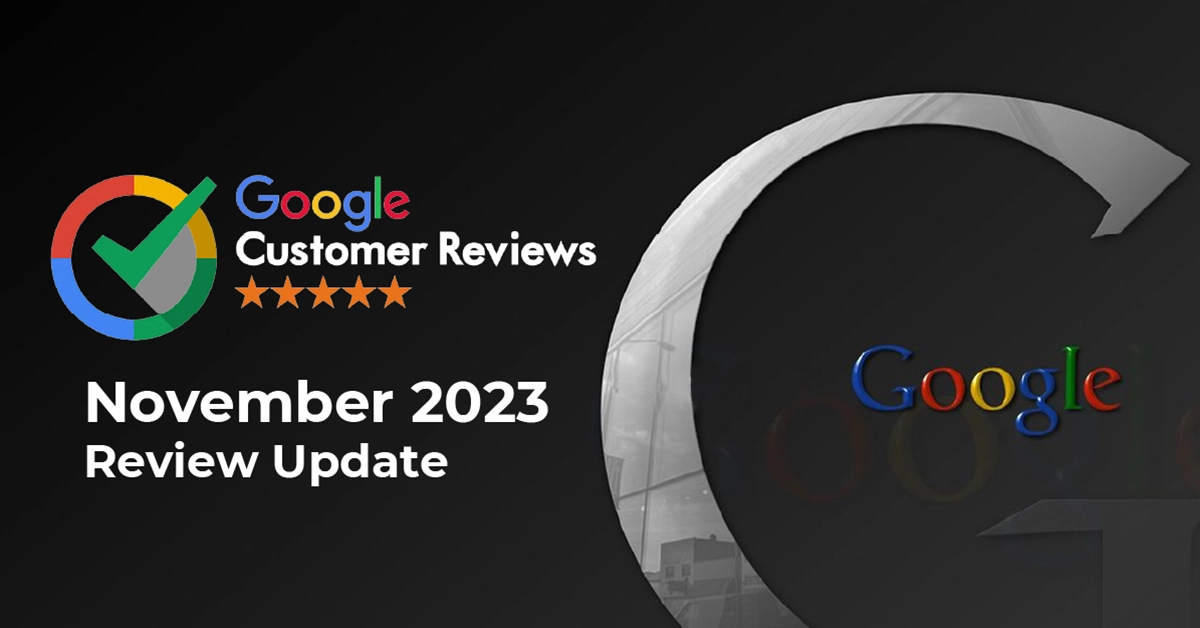
November 2023 Review Update
The November 2023 Review Update began rolling out on November 8, 2023, completing on December 7, 2023. Moving forward, Google will continuously update its review system.
This algorithm update aims to reward high-quality reviews featuring insightful analysis and original research from experts or enthusiasts. It evaluates content at the page level, focusing on articles, blog posts, or similar standalone content offering recommendations, opinions, or analysis.
Site owners are advised to consult Google's help page to create high-quality reviews. Content should aim to showcase expertise, present evidence, and thoroughly explore the advantages and disadvantages of the subject matter. The goal is to empower users with comprehensive information for well-informed decision-making.
While improvements to content can lead to recovery over time, it's just one of many factors influencing content ranking.
November 2023 Broad Core Update
This significant core algorithm change seeks to improve providing valuable and dependable search results for users. This could potentially affect your sites overall traffic. Its always recommended to wait until the update is complete before assessing any impacts.Historically, these types of updates complete their full rollout over the span of two weeks.
October 2023 Spam Update
On October 4, 2023, Google released its October 2023 spam update, targeting improvements in its spam detection system and extending coverage to languages like Turkish, Vietnamese, Indonesian, Hindi, Chinese, and more. The rollout of this update is expected to take 2-3 weeks. Website owners should monitor their rankings during this period and ensure compliance with Google's quality guidelines to maintain search visibility.
September 2023 Helpful Content Review Update
On September 14, 2023, Google issued the September Helpful information Update, focusing the improvement of its algorithm to more accurately identify helpful information. This upgrade reflects Google's continuous efforts to provide relevant and high-quality material top priority in search results. Particularly, the December 2022 helpful content update was closely followed by this one.
September 28, 2023 marked the end of the September Helpful Content Update rollout. Website owners would have noticed changes in their search ranks during this time as Google's classifier adapted to the new standards for determining useful content.
Google offers a series of self-assessment questions to help website owners evaluate how this algorithm change has affected their sites. Webmasters can assess their content using these questions and pinpoint areas that need work to bring it into compliance with Google's rules and boost search exposure.
Focusing on producing useful, educational, and user-centric content is necessary to react to algorithm changes like the September Helpful Content Update. Website owners can potentially boost their visibility in search results and limit negative effects on their search rankings by answering Google's inquiries and making sure their content satisfies the helpfulness criterion.
August 2023 Broad Core Update
Google released a broad core update on August 22, 2023, aimed at enhancing the overall assessment of content. The objective is to improve the quality and relevance of search results by refining how Google evaluates webpages. As with previous broad core updates, the impact of these changes can vary, potentially leading to improvements in search rankings for some pages that were previously undervalued, while others may experience a decline.
The rollout of the August Broad Core update concluded on September 7, 2023. During this period, website owners may have observed fluctuations in their search rankings as Google's algorithms adjusted to the changes. Google offers general guidance for sites impacted by core updates, which can help webmasters understand and address any negative impacts on their search visibility.
Adapting to algorithm updates requires a focus on creating high-quality, relevant content that meets user intent and aligns with Google's quality guidelines. By providing valuable information and a positive user experience, websites can enhance their chances of maintaining or improving their search rankings despite algorithmic changes.
April 2023 Review Update
Launched on April 12, 2023, Google's April 2023 Review Update is a major algorithmic change that focuses on reviews of goods, services, travel locations, video games, movies, and related subjects. This improvement is important for businesses who depend on customer reviews as well as SEO experts.
On April 20, 23, and 25, SEMRush Sensor recorded significant volatility during its launch, indicating significant shifts in search ranks.
This update's main goal is to improve search rankings and user experience by making it easier for users to find pertinent information from reviews. Google highlights the significance of producing evaluations that are of a high caliber, exhibit subject matter expertise, offer supporting data, and address the advantages and disadvantages of the topic.
As per Google's rules, content authors tend to concentrate on assisting users in making adequately informed selections by examining goods or services from the viewpoint of the user, contrasting comparable possibilities, and providing links to helpful resources. Following these guidelines can help produce thorough and beneficial reviews, which will eventually improve search rankings and users alike.
March 2023 Broad Core update
Google made a big algorithmic change on March 15, 2023, known as the March 2023 Broad Core Update, which affected all content kinds in all countries and languages. It seeks to enhance content evaluation, which could raise the ranks of pages that were previously given less weight. To take advantage of the upgrade, website owners should place a high priority on producing valuable, high-quality content that offers exceptional user experiences and strong E-A-T signals (Experience, Expertise, Authority, and Trustworthiness).
February 2023 Product Review update
Google's February 2023 Product Reviews Update significantly changed how product reviews are ranked and shown in search results. This update was conducted from February 21, 2023, to March 18, 2023, with the goal of improving the standard and applicability of product review information in the following languages: English, Spanish, German, French, Italian, Vietnamese, Indonesian, Russian, Dutch, Portuguese, and Polish.
Important elements of the update comprised:
Put an emphasis on High-Quality Content: Google stressed how crucial it is for companies to produce high-quality content that gives users useful information. This means writing thorough and enlightening product reviews that go beyond the surface and offer real insights to assist customers in making wise purchases.
Schema markup and Structured Data Optimization: E-commerce websites were advised to use appropriate schema markup and structured data to optimize the content of their product reviews. Businesses may give search engines more information about their products, including price, availability, and review ratings, by using structured data markup. This will increase the products' visibility in search results and improve user experience.
User Experience Considerations: The importance of user experience in product review content has also been highlighted by Google's change. Websites that put an emphasis on mobile responsiveness, simple navigation, and user-friendly design are more likely to score well in search results.
The significance of user experience, relevancy, and quality in product review content was underlined throughout the February 2023 Product Reviews Update. Companies who put these elements first and follow best practices for content production and optimization will be in a better position to gain from increased search engine visibility and interaction.
2022 Updates
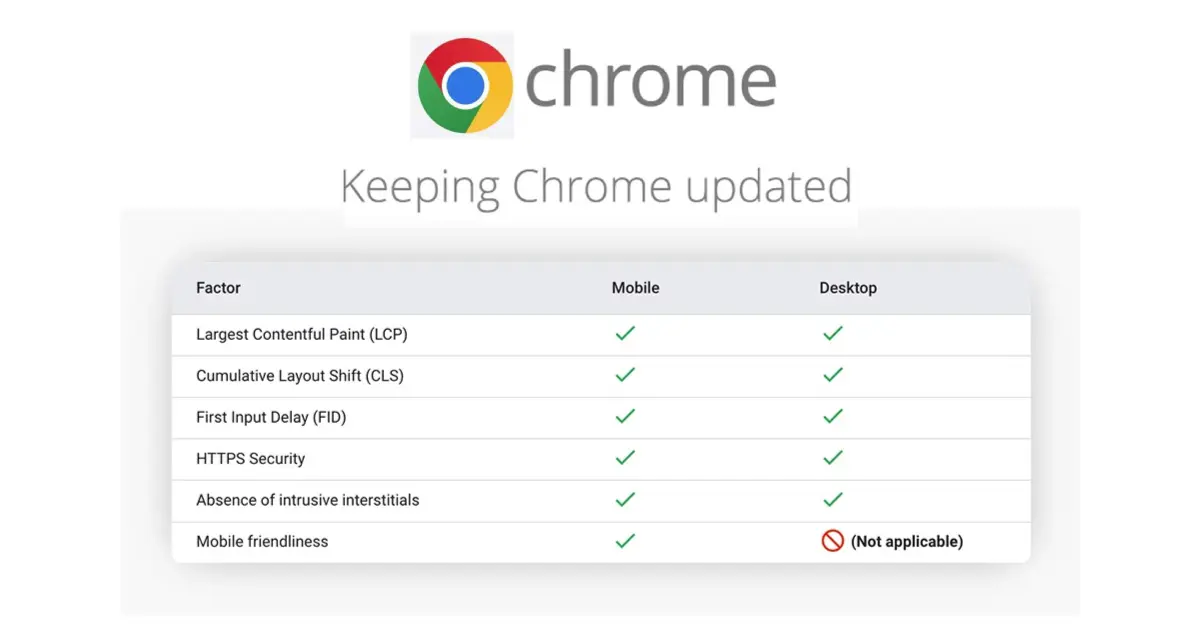
Page Experience Update (Desktop) - February 22, 2022
Google announced that the Page Experience Update, which was previously made available on mobile SERPs, would also be made available on desktop. Officially, this rollout took place from February 22 to March 3.
Product Reviews Update - March 23, 2022
Google confirmed a significant update to product reviews and modified the naming scheme to match the Core Updates. The update, which was launched on March 23 and took 19 days to complete, built on previous iterations of the product review update to identify superior(quality) product reviews.
Core Update - May 25, 2022
Google announced the launch of a core update on May 25th. The rollout was finished on June 9th after nearly two weeks. Like the majority of Core Updates, Google gave no details.
The core updates Google makes are the ones that improve Search as a whole and stay up with how the web is changing. While a core update doesn't specifically target any one site, it may result in some observable changes to how sites perform.
Product Reviews Update - July 27, 2022
On July 27th, Google announced the launch of the July 2022 Product Reviews Update; it was finished on August 2nd.The algorithm is made to favor in-depth research reviews over thin content that just recaps data available on a manufacturer's website.
Helpful Content Update - August 25, 2022
The helpful content update aims to better reward content where users feel to have had a satisfactory experience, whereas content that falls short of a user's expectations would do poorly. The actual rollout took place over a period of two weeks, ending on September 9th, with an unusual pre-announcement made just one week beforehand. No obvious indicators of a significant influence were present.
September Core Update 2022 - September 12, 2022
On September 12, Google announced an update to its core algorithm, which was finished on September 26. Any attempts at analysis were complicated because the Update was released shortly after the Helpful Content Update.
September Product Review Update - September 20, 2022
On September 20, Google announced the launch of product review algorithm update, which was finished on September 26. Although, they did not provide any guidance for this specific update to site owners. This update does not apply to you if your site does not provide product reviews. It isn't a core update that affects every search result.
October Spam Update - October 19, 2022
A new update rolled out , in which they said Google(with Spambrain-Google AI Based Spam Prevention System) is getting better at identifying Link Spams(Paid links, Forum Profile Links, affiliate links etc.). They plan to nullify these links in its ranking algorithm. Google has updated its policies to clarify how sponsored links should be labeled.They named this update as the “October Spam Update 2022”.
December Spam Update - December 14, 2020
December 2022 link spam update launched,It will take around two weeks for the full rollout. As spammy links are neutralized and any credit passed by these unnatural links is removed, rankings may change. All languages will be impacted by this launch .In addition to immediately detecting spam, SpamBrain can now identify sites that are used to pass outbound links as well as sites that are used to buy links.This will impact sites that are engaged in inorganic link building.
Update to the Quality Rater Guidelines - E-E-A-T - December 15, 2022
Google has released that E is included for Expertise in E-A-T. Additionally, site owners and webmasters will see clearer guidance throughout the rules highlighting the value of content created to be unique and beneficial for people and clarifying that beneficial information can come in a variety of formats and from a variety of sources. They hope that these updates better capture the nuances of how people search for information as well as the diversity of quality information available around the world.
2021 Updates
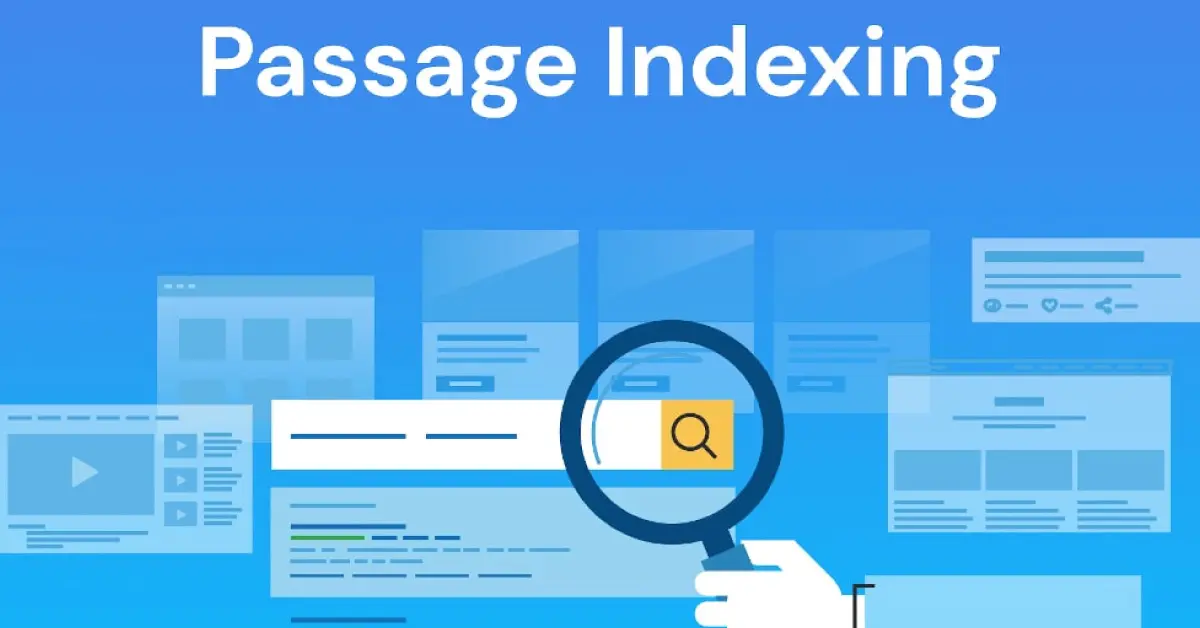
Passage Indexing (US/English) - February 10, 2021
For US/English queries, Google launched "passage indexing" (which more strongly matches passage ranking). Although there was a measured two-day fluctuation in rankings, it was unclear exactly how the update affected SERPs. At first, Google predicted that this upgrade would have an effect on 7% of queries.
Product Reviews Update - April 8, 2021
To reward In-depth reviews above superficial and spammy affiliate reviews (impacting English-language only at launch)an update announced by Google. Although the update seems to be focused on review quality, the exact factors seem to be complex.
June 2021 Core Update - June 2, 2021
Google released the two Core Updates for June and July 2021 at the same time, which is unusual. According to reports, the June Core Update was released from June 2 to 12, reaching its peak on June 3 in MozCast at a temperature of 107.3°F.
Spam Updates - June 23, 2021
On June 23 and June 28, Google launched two updates aimed at reducing spam. It was not clear how the two updates related to one another or what was directly affected. Although some sites had a considerable impact, there was no clear effect on the volatility of overall rankings.
Page Experience Update - June 25, 2021
Google announced that it would continue bringing out the Page Experience Update through August 2021 on June 25th, after many delays. This update affected both organic results and news results and added Core Web Vitals(Along with Top Stories).
July 2021 Core Update - July 1, 2021
The July 2021 Core Update, which was released from July 1–12, was a follow-up to the June Core Update. Despite having temperatures in the 90s on July 5, 8, and 11, MozCast's peak volatility on July 1 was 102.7°F. Google's Core Updates were generally unclear in their details.
July 2021 Link Spam Update - July 28, 2021
A link spam update from Google was revealed, and it apparently took 2-4 weeks to go out. Google claims that this extensive algorithm update affected many different languages. On July 28, MozCast recorded high flux, peaking at 100.3°F.
Page Title Rewrites Update - August 16, 2021
SEOs started to observe a noticeable increase in Google rewriting page names in SERPs around August 16. After receiving numerous complaints about the quality of the results, Google later confirmed this update (though not the specific date) and scaled back some of the modifications in September.
Spam Update - November 3, 2021
Over the course of around 8 days, Google rolled out another significant spam update. On November 2, MozCast reached its peak temperature of 96.9°F. In contrast to the July update, Google did not refer to this as a "link spam" update and gave no information regarding the websites and strategies targeted.
Core Update - November 17, 2021
Google announced the launch of a core update on November 17. Despite the fact that this update was officially finished at the end of November, the majority of tracking websites indicated a significant one-day jump (with MozCast reaching 101.7°F on November 17).
Product Reviews Update - December 1, 2021
Google announced a new update to reward excellent product reviews on December 1. This update apparently took 15-20 Days to roll out.
As a result, Google added two new best practices for product reviews, which will become effective in a subsequent release.
- To demonstrate your expertise and increase the authenticity of your review, include evidence from your own use of the product, such as images, audio, or other links.
- If it makes sense for your website, take into account incorporating links to various vendors to provide the reader the choice to make a purchase from the retailer of their choosing.
Top Stories Redesign Update - December 6, 2021
Although it wasn't a standard algorithm update, Google changed the layout of Top Stories significantly, breaking it into two columns on desktop and (in so many cases) significantly increasing the space taken up by news items on SERPs.
2020 Updates
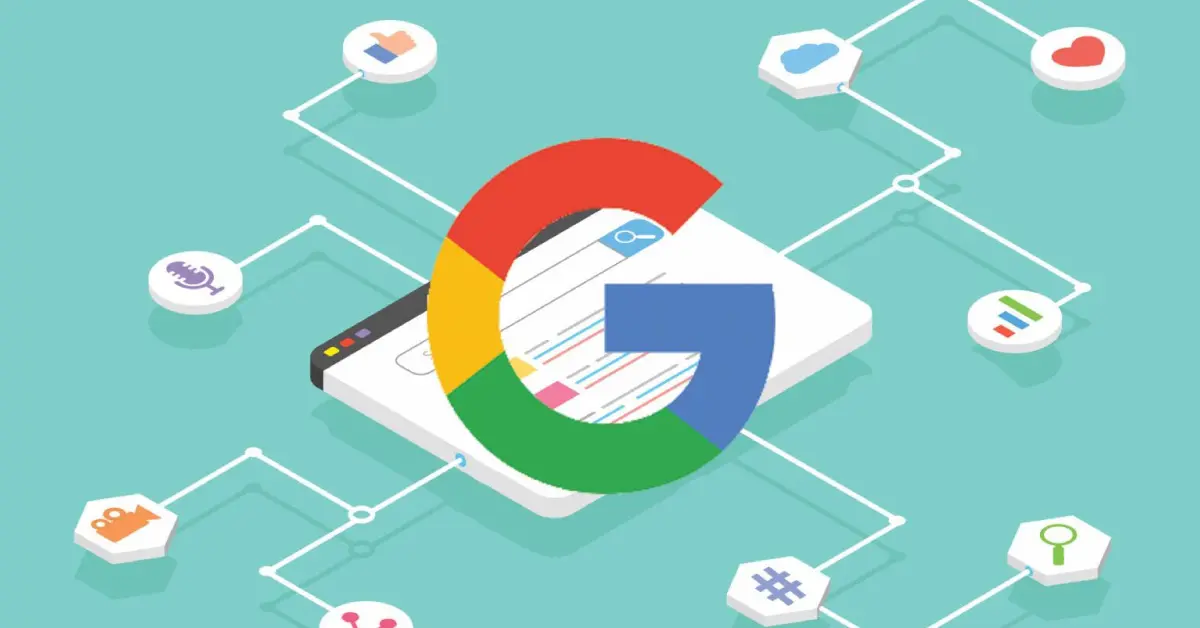
January 2020 Core Update - January 13, 2020
In line with the previous three core updates, Google released a new core update that included strong flux over three days and a high temperature of 97°F but less significant than the "Medic" core update from August 2018.
Featured Snippet De-Duping Update - January 22, 2020
According to Google's philosophy that a Featured Snippet is a promoted organic result, it was announced that URLs in Featured Snippets would no longer show up as conventional organic results. Ranking tracking and organic CTR were both significantly impacted by this.
May 2020 Core Update - May 4, 2020
Google announced its second Core Update of 2020, which had a significant impact on rankings from roughly May 4 to 6. It was measured on MozCast as the second-highest Core Update following the August 2018 "Medic" update, reaching a peak of 113°.
December 2020 Core Update - December 3, 2020
On December 3rd, the majority of the effects of Google's Core Update appeared to have been felt. In line with the March 2020 Core Update and the August 2018 "Medic" Update, MozCast reached 112°F. A few days later, other sites reported reversals, but it seems that these were few in number.
2019 Updates
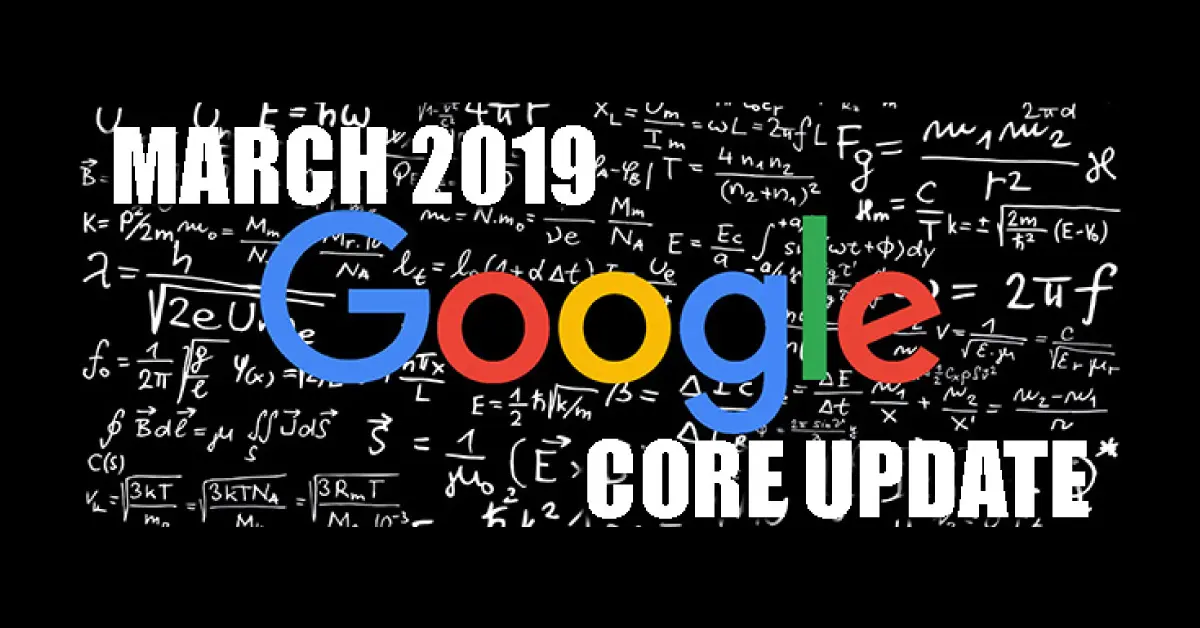
March 2019 Core Update - March 12, 2019
A "core" update was confirmed by Google, who noted that it was the third significant core update since they started using the label. MozCast reached a peak of 101.2°F, a little lower than the March 1st average. The update's nature was not made clear in any way.
Deindexing Bug Update - April 5, 2019
A bug that removed pages from the search index on the weekend of April 5 has been confirmed by Google. 4% of consistently performing URLs drop off of page one. Most of the sites quickly recovered.
Indexing Bug Update - May 23, 2019
Google confirmed indexing bugs , the initial problem prevented fresh information from being correctly indexed. The SERP flux was particularly high from May 23 to 25, spiking on the 23rd, according to MozCast, but it's not clear if this was caused by the bugs.
June 2019 Core Update - June 3, 2019
Google made a "core" update pre-announcement but provided little information . Some websites appear to have been damaged by prior core updates, and several major UK publishers reported significant losses. The effect was generally less than the August "Medic" update.
Site Diversity Update - June 6, 2019
A "site diversity" update, which Google had previously mentioned, was supposed to help websites with more than two organic listings. The information demonstrated that while the update did marginally boost SERPs with three to five duplicate sites on page one, the effect was minor.
September 2019 Core Update - September 24, 2019
Google launched a new core update. The upgrade appeared to affect sites affected by earlier core updates, with a measurement of 97°F on MozCast (very high, but not historically high). Google didn't offer a lot of information.
BERT Update - October 22, 2019
Bidirectional Encoder Representations from Transformers (BERT), is a neural network-based method for natural language processing (NLP) pre-training that Google first introduced and made available online in 2018. This innovation came about as a result of Google's research on transformers, models that process words in connection to all the other words in a phrase as opposed to individually and sequentially. BERT models may therefore take into account a word's entire context by looking at the words that come before and after it, which is very helpful for figuring out the purpose behind search queries.
International BERT Roll-out(Update) - December 9, 2019
According to Google, the BERT natural language processing technology is being implemented globally in 70 languages. The SEO community has been speculating before this news, and it's unclear when it will actually go into effect.
2018 Updates
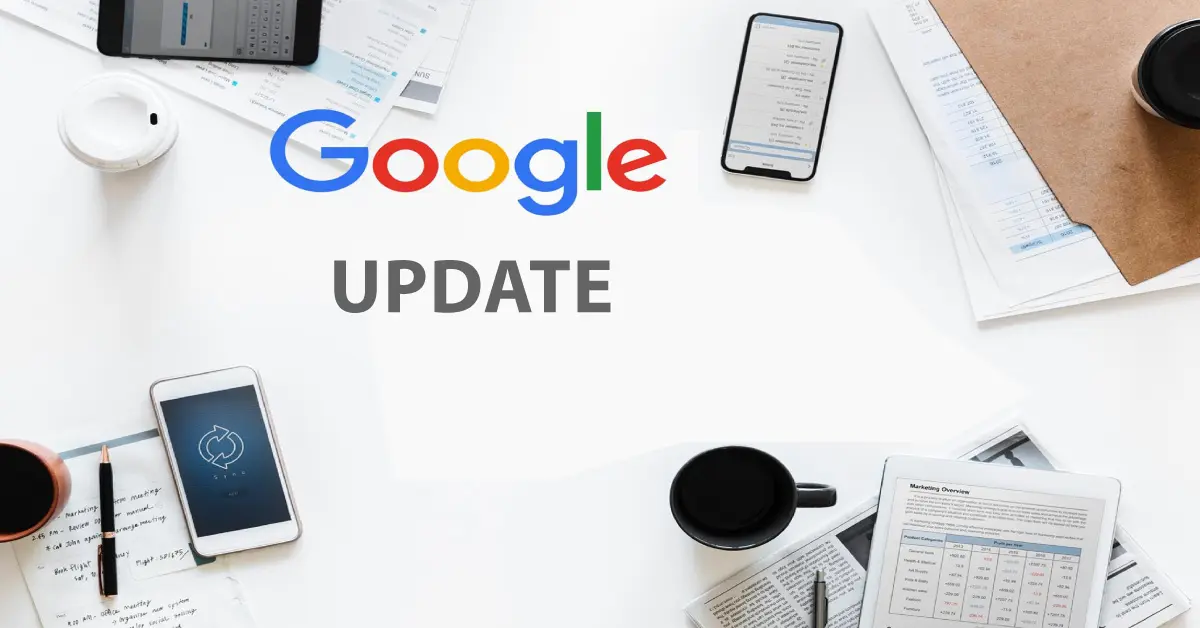
Mobile First Index Roll-out(Update) - March 26, 2018
After one and half years of testing ,The mobile-first index was finally "rolling out," according to Google. It's unclear how much of an impact this single roll-out has on the entire index. Google has stated they are moving sites gradually. Google Search Console messages should start to appear for webmasters. They describe how websites that use responsive web design or dynamic serving are often configured for mobile-first indexing. Google will prefer to index the mobile version of the non-AMP page for websites that include both AMP and non-AMP pages.
Snippet Length Drop Update - May 13, 2018
Google changed back the majority of snippets to the previous character restriction after testing larger display snippets of up to 300+ characters for a few months (about 155-160 characters).
Video Carousels Update - June 14, 2018
Google changed the results that were previously tracked as organic by moving videos from organic-like results with thumbnails into a dedicated video carousel. The quantity of SERPs with videos also significantly increased at the same time.
Mobile Speed Update - July 9, 2018
Google announced the mobile page speed update, which included page speed as a ranking factor for mobile results, six months after it was first announced. There was no proof of significant changes in mobile ranks, according to Google, who stated that this only affected the slowest mobile sites.
Chrome Security Warning (Full Site)/ Marked HTTP as “Not Secure” Update - July 24, 2018
Months before, Chrome 68 had started flagging all non-HTTPS websites as "not secure," alerting users to the dangers of using unsecure (non-HTTPS) forms. The changes went into effect on July 24 but depend on users updating to the most recent Chrome version, which can take weeks or months.
Medic Core Update - August 1, 2018 {EAT Concept-Expertise, Authoritativeness and Trustworthiness}
Google confirmed a "broad core algorithm update," with numerous reports of a significant effect. It began to spread over the course of about a week, peaking on August 1st and 2nd,2018. Despite having a significant impact across all verticals, this algorithm update is assumed to have targeted so-called YMYL queries (Your Money or Your Life)that appeared to have a disproportionately negative effect on websites in the health and wellness sector.
2017 Updates
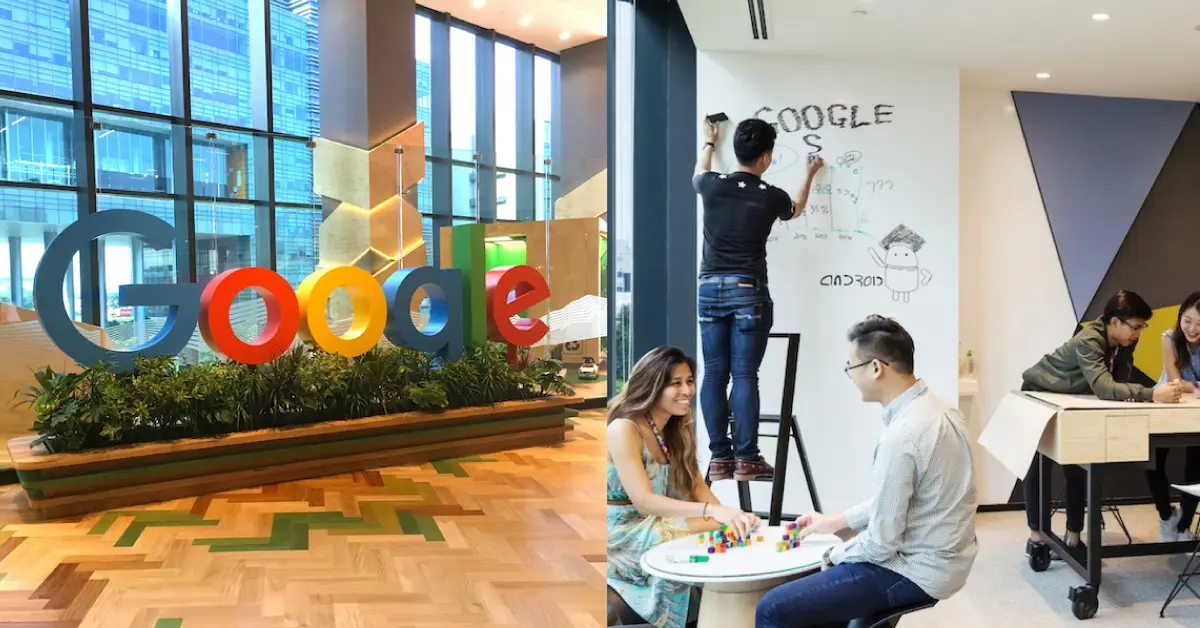
Google Jobs Update - June 20, 2017
Google announced a new jobs and recruiting update by working together with the job-matching sector. This update is designed to help people find jobs more easily(In the search results a standalone 3-pack of job postings). The company is also making it easier for employers/site owners with job content to find the right candidates. Nearly all of the major data sources, including LinkedIn, Monster, Glassdoor, and CareerBuilder, were used to produce these findings.
Snippet Length Increase Update - November 30, 2017
Google increased search snippet length across a large number of results after testing them for more than two years. Due to this, they increased the Meta Description character limit from 155 to 300. (almost doubling). Google confirmed making changes to the way snippets are handled, but didn't clarify.
2016 Updates

Adwords Shake-Up Update - February 23, 2016
In addition to completely removing right-column advertisements and implementing 4-ad top blocks on many commercial searches, Google made major changes to AdWords. The Click-through rate for both paid and organic results was significantly affected by this change, especially for competitive terms, even though it was a paid search update.
Mobile Friendly 2 Update - May 12, 2016
As a ranking factor on mobile searches, Google started using mobile friendliness. In order to help users in finding even more pages that are relevant and mobile-friendly, they announced that they will begin rolling out an update to mobile search results from the beginning of May 2016. This update will increase the impact of the ranking signal.
Penguin 4.0 Announce Update - September 23, 2016
After two years of penguin's last update ,Google finally announced a significant Penguin update. They claimed that the new Penguin is now included into the "core" algorithm in real-time. Initial assessments of the impact were modest, but it was later discovered that the Penguin 4.0 launch was unusually long and multi-phased. The most significant change was that Penguin is now real-time and more granular.
2015 Updates

Mobile Update AKA “Mobilegeddon” - April 21-22, 2015
In an unusual move, Google pre-announced an algorithm update that will result in different mobile ranks for sites that are mobile-friendly beginning on April 21. This update had a significantly less immediate effect than expected, and according to data, algorithm flux peaked on April 22nd.
The Quality Update - May 3, 2015
Google announced a core algorithm update that has an impact on "quality signals" in response to numerous reports of significant ranking changes, first called "Phantom 2." Although Google concealed data regarding the characteristics of the signals, this upgrade appears to have a significant influence.
Panda 4.2 (28th) Update - July 17, 2015
Google announced a Panda update (probably a data refresh) and advised that the full rollout could take several months. There were no clear indications of a major algorithm upgrade, and the immediate effect was unclear.
Rankbrain Update - October 26, 2015
In a significant statement, Google revealed that machine learning has been a component of the algorithm for months and was responsible for the third most important ranking factor.This is a date for just an announcement. Rankbrain has been used by Google from around the middle of the year 2015. RankBrain is a machine learning system that Google uses to process and search the content of web pages. RankBrain is especially helpful in understanding complex queries, which it can then use to find pages that might otherwise not show up on a standard search engine results page.
2014 Updates
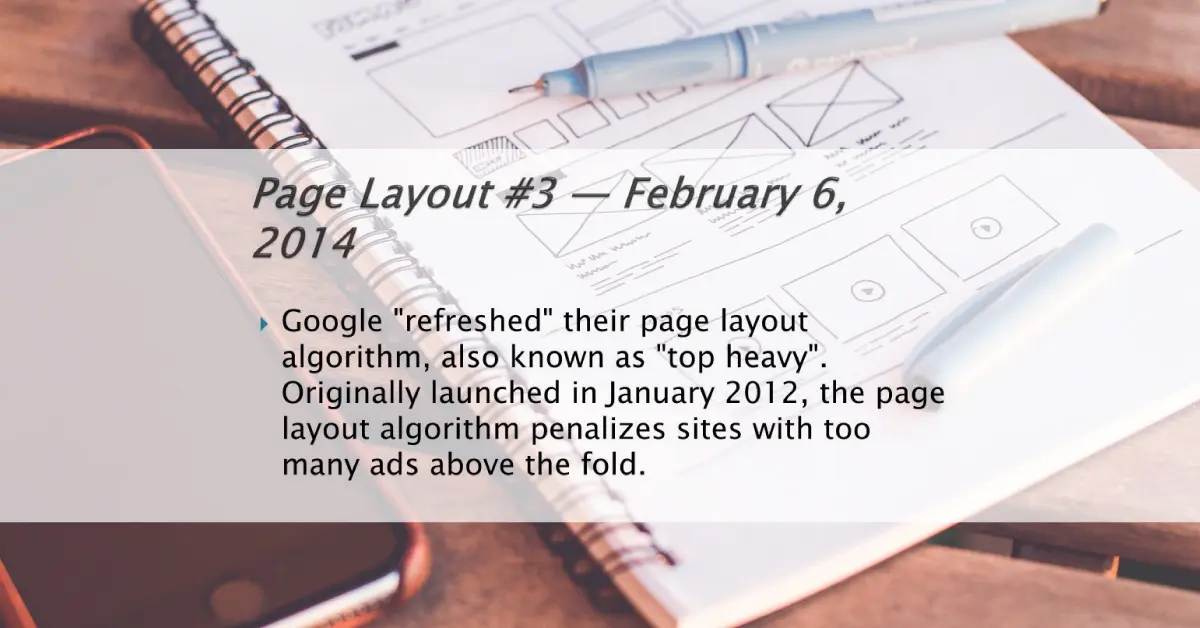
Page Layout (3rd) Update - February 6, 2014
The "top heavy" page layout algorithm used by Google has been "refreshed." The page layout algorithm, which was first introduced in January 2012, penalizes websites with an excessive number of adverts above the fold.
Payday Loan 2.0 Update - May 16, 2014
Google's "payday loan" algorithm, which primarily targets spam requests, was changed. Because of the back-to-back changes and the unclear roll-out date (Google stated this on 20th May 2014), it was challenging to pick out the details.
Panda 4.0 (26th) Update - May 19, 2014
Google announced a major Panda update that probably involved both an algorithm and data refresh. Officially, 7.5% of queries in the English language were impacted. Matt Cutts claimed that it started rolling out on May 20; however, their data clearly implies that it began before.
Payday Loan 3.0 Update - June 12, 2014
A major update of Google's anti-spam update was launched less than a month after the Payday Loan 2.0 update. According to official declarations, 3.0 targeted spammy queries, whereas 2.0 targeted specific websites.
Authorship Photo Drop Update - June 28, 2014
After actively promoting authorship as a link to Google+, John Mueller unexpectedly announced (on June 25th) that Google would be removing all authorship photographs from SERPs. By around June 28th, the drop was finished.
Pigeon Update - July 24, 2014
With an update that drastically changed some local results and altered how they process and interpret location cues, Google shocked the world of local SEO. According to Google, Pigeon strengthened the connections between the local algorithm and the core algorithm (s).
HTTPS/SSL Update - August 6, 2014
After months of suspicions, Google finally confirmed that it would prioritize secure websites and that implementing encryption would give them a "lightweight" ranking lift. They highlighted that this increase would initially be modest but gave the impression that if the adjustment turned out to be successful, it might grow.
Authorship Removed Update - August 28, 2014
Google indicated that authorship markup would be entirely removed after the authorship photographs were removed on June 28. (and would no longer process it). Authorship bylines were no longer visible in any SERPs the following morning.
“In the News” Box Update - October 1, 2014
Google changed the way the News-box results appeared, but later revealed that they had broadened the news links to include a much wider range of potential websites. Additionally, the number of news results in SERPs increased, and big news websites noted significant traffic changes.
Penguin 3.0 Update - October 17, 2014
Google launched a Penguin refresh more than a year after the launch of the previous Penguin update (2.1). Less than 1% of US/English searches were reportedly affected by this change, which was smaller than expected and most likely data-only (not a new Penguin algorithm). Google claimed that the update was spread out over "weeks," although the exact timeframe was unclear, especially globally.
Pirate 2.0 Update - October 21, 2014
Google released yet another update to stop the theft of software and digital media more than two years after the initial DMCA/"Pirate" update. A relatively limited number of sites had massive losses in ranking as a result of this update, which was highly targeted.
Penguin Everflux Update - December 10, 2014
Rather than making significant major, rare updates anymore, a Google representative claimed that Penguin now makes continuous updates. This claim seems to reflect continuous change following Penguin 3.0, however the exact timeline remained uncertain (including unverified reports of a Penguin 3.1).
Pigeon Expands Update (UK,CA and AU) - December 22, 2014
The "Pigeon" major local algorithm update by Google was expanded to the UK, Canada, and Australia. The initial upgrade arrived in the US in July 2014. The update may have gone live as early as the 19th, but it was officially announced on the 22nd.
2013 Updates
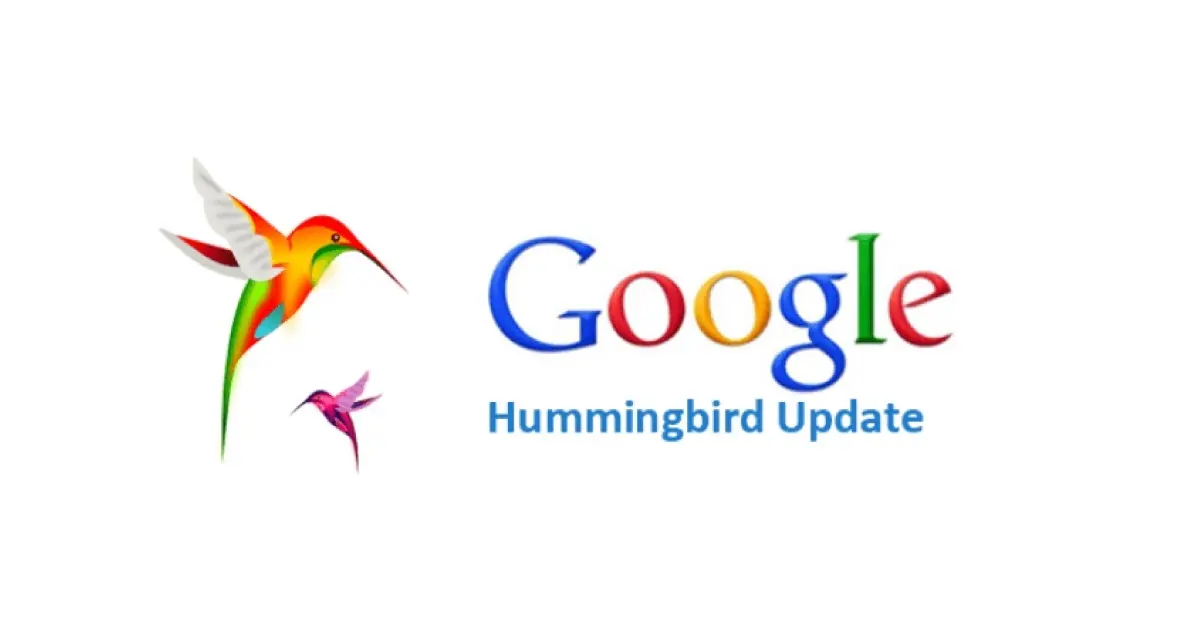
Panda (24th) Update - January 22, 2013
In its first official update of 2013, Google claimed that 1.2% of queries were impacted. This seemed unrelated to discussions of an update around 17–18 january. (Google did not confirm this.).
Domain Crowding - May 21, 2013
In order to manage domain diversity and crowding deep in the SERPs (pages 2+), Google has released an upgrade. Although the release date was unknown, it seems to occur in the US immediately before Penguin 2.0 and perhaps on the same day everywhere.
Penguin 2.0 (4th) Update - May 21, 2013
The fourth Penguin update (named "2.0" by Google) arrived with just a small impact after months of rumors bordering on excitement. It was unclear exactly what changed, although some information showed that Penguin 2.0 was more specifically targeted at the page level.
Payday loan Update - June 11, 2013
Payday loans and porn were notably mentioned when Google announced a targeted algorithm update to address niches with a reputation for producing spammy results. Although Matt Cutts said the upgrade would roll out over a 1-2 month period, it was revealed on June 11th.
Panda Recovery Update - July 18, 2013
Google announced a Panda update, but it wasn't clear if this was a fresh release or one of the 10-day rolling updates. This was implied to be algorithmic and could have "softened" some prior Panda penalties.
Hummingbird Update - August 20, 2013
Google said the "Hummingbird" update went live nearly a month earlier than it was first announced on September 26. There were numerous reports of flux during August 20–22 after the update was introduced on August 20, 2013. The semantic search and Knowledge Graph may change for months to come by Hummingbird, which has been compared to caffeine and appears to be a core algorithm update.
Penguin 2.1 (5th) Update - October 4, 2013
Google released a new Penguin update after a four and half month break. Given the 2.1 classification, this was likely more of a data update than a significant Penguin algorithm change. Although some webmasters claimed to have been severely impacted, the general effect appeared to be minor.
2012 Updates
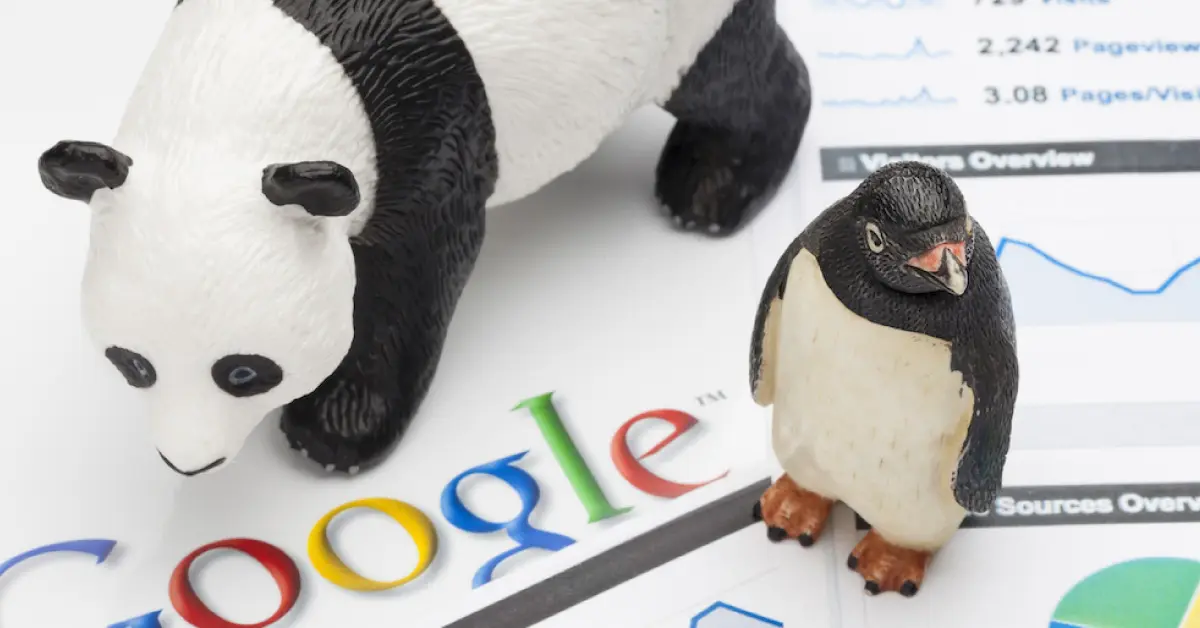
Search+your world - January 10, 2012
Google revealed a fundamental change in customization, putting Google+ social data and user profiles into SERPs aggressively. Additionally, Google included a new, toggle button to turn off customization.
Panda 3.2 Update - January 18, 2012
Google confirmed a Panda data update but claimed the algorithm was unchanged. How this fit into the "Panda Flux" plan of more frequent data refreshes remained unclear.
Ads Above the Fold Update - January 19, 2012
Websites with excessive ad space above the "fold" will now be penalized by Google's revised page layout algorithms. It was previously thought that Panda was affected by a similar cause. The update had no official name, but some SEOs referred to it as "Top Heavy."
Panda 3.3 Update - February 27, 2012
With this launch, the Panda system's data is updated, improving accuracy and sensitivity to recent changes on the web.This has a lot of similarities to Panda 3.2, which took place in mid-January and was merely referred to as a "data refresh" and not having anything to do with new or modified ranking signals.
Venice Update - February 27, 2012
Google mentioned the code-name "Venice" as part of their monthly update. This local upgrade seems to more tightly incorporate local search data and more aggressively localize organic results. The exact roll-out date was not clear.
Panda 3.4 - March 23, 2012
While the update was being rolled out, Google made another Panda update announcement on Twitter. According to their declarations made in public, Panda 3.4 affected 1.6% of search results.
Parked Domain Bug (Update) - April 16, 2012
Google said that some sites had been incorrectly categorized as parked domains as a result of a data error after many webmasters complained about ranking changes (and thereby devalued). This algorithm change wasn't purposely made.
Panda 3.5 Update - April 19, 2012
Google secretly released a Panda data update in the middle of a busy week for the algorithm. The impact was hard to quantify because of a variety of changes, but it seems that this was a fairly typical update with little effect.
Penguin Update - April 24, 2012
The "Webspam Update," later known as "Penguin," was ultimately launched by Google after weeks of rumors of a "Over-optimization penalty." The Penguin update affected an estimated 3.1% of English queries and changed a number of spam-related criteria, including keyword stuffing. 3% of searches are affected by the change in languages like German, Chinese, and Arabic, but the impact is greater in languages(i.e. Polish) that receive more spam.
Panda 3.6 Update - April 27, 2012
Google released yet another Panda data update barely a week after Panda 3.5. This update's effects were unclear, and it appeared that its influence was little.
Knowledge Graph Update - May 16, 2012
Google began rolling out "Knowledge Graph," a SERP-integrated display that offers extra information about specific people, places, and things, in a significant step toward semantic search. Over time, "knowledge panels" should start to show up on an increasing number of SERPs.
To begin, there are three key ways that the Knowledge Graph improves Google Search:
- Find the right thing
- Get the Best Summary
- Go Deeper & Broader
Penguin 1.1 Update - May 25, 2012
Following the "Penguin" algorithm change, Google released its first targeted data update. This showed that, similar to Panda data, Penguin data was processed outside of the main search index.
Panda 3.7 Update - June 8, 2012
Google announced the release of yet another update to its Panda data, stating that less than 1% of queries were impacted. Data on ranking changes indicated that the impact was far greater than with previous Panda releases (3.5, 3.6).
Panda 3.8 Update - June 25, 2012
Another Panda data refresh was implemented by Google, however it seemed to be data-only (no algorithm changes) and had a significantly lower effect than Panda 3.7.
Panda 3.9 Update - July 24, 2012
Google released a new Panda update one month after Panda 3.8. Although no single day's ranking was high enough to stand out, rankings changed for five to six days. ~1% of queries, according to Google, were affected.
DMCA Penalty (Pirate) Update - August 10, 2012
Google declared that they would begin penalizing websites (from around 13 august 2012) that repeatedly violate copyright, most likely through DMCA(Digital Millennium Copyright Act) takedown requests. Sites with a lot of removal notifications may rank lower in SERP.
Panda 3.9.1 Update - August 20, 2012
Google released yet another Panda data update, but it didn't seem to have much of an effect. The new release was given the name 3.9.1 because the Panda 3.0 series ran out of numbers at that point.
Panda 3.9.2 - September 18, 2012
Another Panda update, which appears to have been data-only, was launched by Google. Although ranking flux was minor, it wasn't comparable to a significant algorithm update.
Exact Match Domain (EMD) Update - September 27, 2012
Google announced an update to the way it handled exact-match domains (EMDs)A "minor" algorithmic change by Google "reduced low-quality 'exact-match' domains'" visibility in the search results.Cutts said that had a noticeable influence on 0.6% of English-US queries.
Remember that this doesn't mean websites with keywords in their domain names that they want to rank for are now doomed. Instead, the update attempts to penalize low-quality websites that might depend on perfect matching.
Panda (20th) Update - September 27, 2012
A major significant Panda change (algo + data) that rolled out, overlapping the EMD update officially affected 2.4% of searches. Industry sources decided to begin naming Panda releases in order because the 3.X series was starting to seem unnatural (this was the 20th).
Penguin (3rd) Update - October 5, 2012
Google announced a minor Penguin data update that affected "0.3% of queries" after suggesting a major Penguin change in the future. Similar to Panda, the Penguin update numbering system was restarted; this was the third Penguin update.
Page Layout (2nd) Update - October 9, 2012
Google has updated its Page Layout filter, also known as the "Top Heavy" update, which was first introduced in January 2012 and targeted at websites with an excessive number of adverts above the fold. It's unclear if this was a Panda-style data refresh or an algorithm change.
Panda (21st) Update - November 5, 2012
Five and a half weeks after Panda Update (20th), Google released their 21st Panda Update. The official impact of this upgrade, which affected 1.1% of English queries, was reported to be minor.
Panda (22nd) Update - November 21, 2012
Google confirmed the 22nd Panda update, which appears to have been data-only, after receiving some conflicting signals. A larger, unnamed upgrade that affected 0.8% of English queries and this was implemented during November 19th–22nd.
Knowledge Graph Expansion Update - December 4, 2012
For non-English searches, such as Spanish, French, German, Portuguese, Japanese, Russian, and Italian, Google incorporated Knowledge Graph capability. This version improved Knowledge graph capabilities and did "more than only translation."570 million entities, 18 billion facts and relationships, and over three times as many global queries are currently covered by graph as when it was first introduced.
Panda (23rd) Update - December 21, 2012
Google released a new Panda update just before the Christmas holiday. 1.3% of English-language queries were impacted by what they referred to as a "refresh." Compared to Pandas 21st and 22nd, this had a slightly greater impact.
2011 Updates
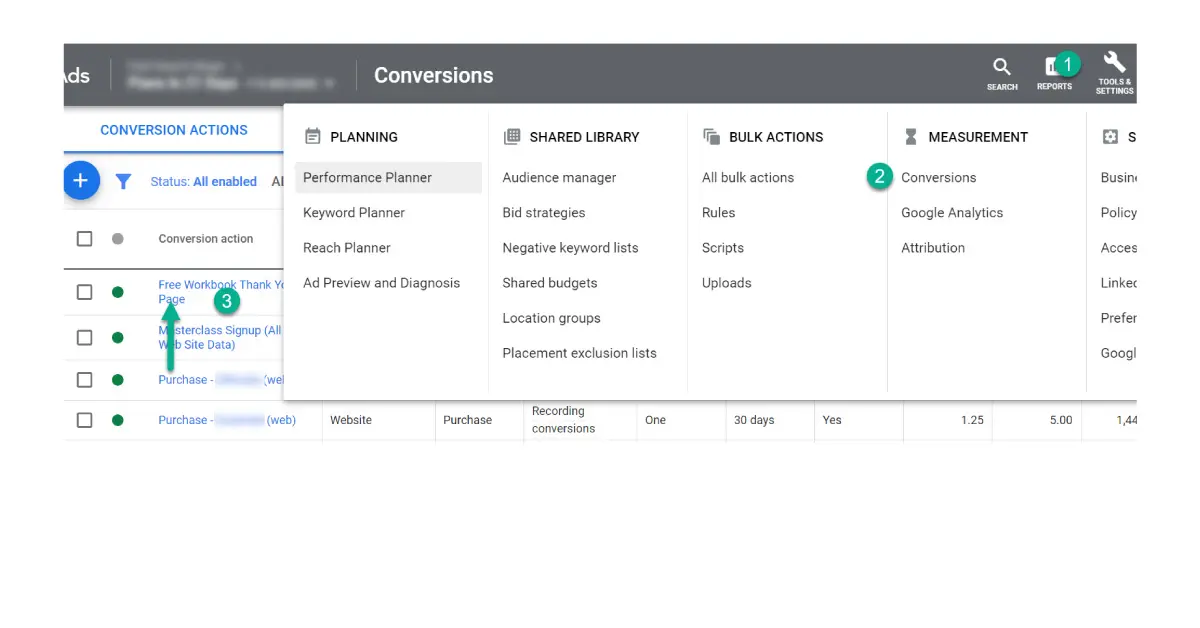
Attribution Update-January 28, 2011
Google Team is testing a number of updates that should help reduce spam levels even more, including one update that mainly impacts copied content and low-originality websites. This rollout was well targeted: less than half percent of search results changed significantly enough for someone to notice, but slightly more than 2% of queries changed in some way. The end result of this update is that websites who created the original content are more likely to appear in search results than websites that scraped or duplicated the content from the original website.
Panda/Farmer Update - February 24, 2011
Google revealed a new change to its search engine in response to the rising criticism that sites with low-quality content(content farms)were placed higher than those with higher-quality information that people appeared to value more. Nearly 12% of all search results are impacted by this significant change.The goal of Panda updates has been content, namely how to eliminate unreliable information from users' search results across all of its versions. It talks about the following things:
- Pages with little to no significant substance and resources are referred to as having thin content. For instance, if you have numerous pages with only a few phrases on each, they will undoubtedly be categorized as having thin content. One or two short pages are acceptable, but if they make up a significant portion of your website, that's a warning flag.
- Duplicate content is information that appears several times. This could be content that has been copied directly from other websites or that appears with little to no text variation on multiple pages of your website.
- Filters on websites that do not agree to technological standards.
The +1 Button - March 30, 2011
In response to competition from important social networks like Facebook and Twitter, Google introduced the +1 button (directly next to results links). Users could affect both organic and paid search results within their social circle by clicking [+1].
Panda 2.0 Update - April 11, 2011
The Panda update was implemented by Google for all English queries worldwide (not limited to English-speaking countries). Additionally, new signals were included, such as information on the websites that people have blacklisted using the Chrome browser or the SERPs directly.This included Google "blocking" data and had an effect on 2% of US searches. Additionally, it saw the algorithm's global rollout.
Panda 2.1 Update - May 9, 2011
There have been rumors that Google has released yet another significant algorithm modification, which some have called "Panda 3.0." According to Google, this is untrue. There has only been a "much smaller" upgrade than Panda 2. Not Panda 3.0, but Panda Update 2.1 Google Says.But won't reveal how many queries were affected, but it claims that the number is much lower than in previous versions.
Schema.org - June 2, 2011
It was the first time that Google had ever updated their algorithm to include semantic markup of websites. This update had a significant impact on search engine optimization.Schema.org is a collaborative effort from Google, Microsoft and Yahoo to create schemas for structured data markup on the web, so it can be understood by both humans and machines.
Panda 2.2 - June 21, 2011
Panda-affected websites and data were still being updated by Google, and version 2.2 was formally recognised. Panda updates resembled early Google Dance changes in that they happened apart from the main index and weren't real-time
According to Google's Cutts, these Panda updates are manually put out, and version 2.2 was designed to increase scraper identification.
Google+ June 28, 2011
Google+ is a major attempt against Facebook that the company launched after a series of social media failures. Google+ was centered around sharing material in circles and was integrated with services like Gmail. Early adopters jumped on board quickly, and within two weeks Google+ had 10 million subscribers.
Panda 2.3 - July 23, 2011
Google may have just released another update, according to webmaster chatter. Confusion existed around whether new elements had been added or whether the Panda data and ranking factors had merely been updated.Google's Team confirmed that As part of their dedication to providing Google users with high-quality sites, they are continuing to refine their Panda algorithm.
Panda 2.4 Update - August 12, 2011
Google launched Panda globally for both English-language searches as well as non-English searches with the exception of Chinese, Japanese, and Korean. According to Google, this had an effect on 6-9% of queries in the targeted nations.. This is significantly less than Panda's first launch, when it significantly affected nearly 12% of English queries.
Expanded Sitelinks Update - August 16, 2011
After a few experimentation, Google formally introduced expanded sitelinks, which are typically used for brand queries.This "reduces link duplication and generates a better organized search results page," according to Google, and is "a major improvement to their algorithms by combining sitelink rating with ordinary result ranking to create a higher-quality list of links". Additionally, they were increasing the sitelinks per query from eight to twelve. Depending on your query, the quantity of sitelinks will also change.
Pagination Elements Update - September 15, 2011
Google introduced the rel="next" and rel="prev" link attributes to help crawl and duplication issues brought on by pagination. The automatic consolidation and canonicalization of "View All" pages have been improved, according to Google.
516 Algo Updates - September 21, 2011
Although it wasn't an update, this fantastic discovery was. Google's CEO, Eric Schmidt, reported to Congress that the company released 516 updates in 2010. The real surprise? More than 13,000 updates were tested.
Panda 2.5 Update - September 28, 2011
Google has admitted that the Panda algorithm has undergone another update. This is Panda Update 2.5, according to their tracking of the algorithm changes. Google declined to provide any details regarding the specific websites, pages, or material that this update targeted, merely providing the usual statement of the company:They're continuously refining.
Panda Flux - October 5, 2011
Expect some Panda-related flux in the upcoming weeks, Matt Cutts tweeted, adding the percentage "~2%." On 10/3, 10/13, and 11/18, there were additional minor Panda changes. According to the weather report, there will likely be some panda-related change over the coming weeks, but it won't be as significant as prior updates (~2%).Flux involving pandas? Indeed, site owners reported Panda-related adjustments at least on October 3rd and October 13th, so it appears that this is the case. In a few instances, They noticed a drop in Google organic traffic on September 27, a rebound on October 3, and a subsequent drop on October 13.
Query Encryption - October 18, 2011
Google made a privacy-related announcement on encrypting search requests. Unfortunately, the data on organic keyword referrals was messed up, and some organic traffic results "(not provided)". In the weeks following the launch, this number had grown.
Freshness Update - November 3, 2011
Google revealed that up to 35% of queries might be affected by an algorithm change that rewards freshness (almost 3X the publicly stated impact of Panda 1.0). This upgrade mostly affected results that were time-sensitive, but it also indicated a much stronger focus on recent content.
10- Pack of Updates - November 13, 2011
This one was a little different. Matt Cutts published an article outlining 10 recent algorithm improvements in an effort to be more open. It's unclear what the timeline was, and the majority of the improvements were minor, but it did indicate a change in how Google announces algorithm updates.
- Cross-language updates for information retrieval.
- Snippets with fewer header/menu and more page content.
- Improved page titles in search results through basic anchor deduplication.
- Russian length-based autocomplete predictions.
- Application rich snippets extended.
- Disabling an image search signal.
- Fresher, more recent results.
- Making official page detection better.
- Date-restricted query improvements.
- IME queries with prediction fix.
Panda 3.1 Update-November 18, 2011
Panda 2.5 marked the beginning of Google's "Panda Flux" phase, during which updates were more frequent and smaller in scale. Even though there was no formal 3.0, some industry observers referred to the 11/18 release as 3.1.Google stated that it had released a "minor" Panda update that only affected less than 1% of all queries.
December 10-Pack Updates - December 1, 2011
Google announced a second set of 10 updates and stated that they would be released once every month. This is the listing.
- Refinements to related query results
- More comprehensive indexing
- A new classifier for "parked domains
- More predictions for autocomplete
- More fresh and accurate blog search results
- Original content
- Live scores for the Canadian Football League and Major League Soccer.
- Image outcome freshness
- Tablet layout
- Code rewrite for top result selection.
2010 Updates

Google Places-April 1, 2010
Now(in April,2010), Local Business centers are becoming Google Places.To assist users in making more informed decisions about where to go, Google launched Place Pages in September 2019 for more than 50 million locations worldwide, including restaurants, hotels, dry cleaners, bike shops, museums, schools, and parks. Pages link users to the greatest online information sources by showcasing images, reviews, and key information together with in-the-moment updates and deals from company owners.
Through the Local Business Center, which enables them to validate and update their business information to include hours of operation, images, videos, coupons, product offerings, and more, four million businesses have already claimed their Place Page on Google. Additionally, it enables them to interact with clients and gather information that helps in strategic business decisions. This update will help small businesses compete with bigger companies by making their business listing more visible on Google Maps and other Google products.
In addition, google introduced a number of new features:
- Service offerings -Now you can choose the regions you service if you travel to serve consumers. Additionally, you can now make your address secret if you operate a business without a physical storefront or office space.
- Advertisement- Businesses in certain cities may use Tags to make their listings stand out on Google.com and Google Maps for just $25 per month. Along with continuing availability in Houston and San Jose, California, Tags are now being introduced in three additional cities: Austin, Atlanta, and Washington, D.C.
- Business Photo Shoots- In Addition to submitting their own images , businesses in some cities now can request for free photo shoots, which will be used to supplement the existing business images on Place Pages.
- Customized QR codes- American businesses/companies using Google Places can get a special QR code for their business right from their dashboard page.
May Day - May 1, 2010
It sort of occurred between April 28 and April 3, 2010, around May 1, which is why they have been calling it Mayday. The algorithm has changed, and long tail searches will be impacted more than short tail searches. It is deliberate and a quality change that has gone through the quality launch committee side by side to ensure that everything looks okay from a quality standpoint. There is no direct intervention involved in this; only Google's algorithm determines whether websites are a better match for a given query than others. In order to identify the best websites that correspond to long tailored queries, one must first access the quality of websites. This is not temporary if you are impacted with mayday then evaluate the quality of your website.
Caffeine - June 1, 2010
The greatest collection of web content Google has ever published, caffeine offers 50% more recent web search results than their previous index. You may now locate links to relevant content far sooner than ever before, regardless of whether it is a news piece, blog post, or forum topic.The goal of the update was to provide faster loading times for Google searches. According to Google, Caffeine enabled them to index billions of web pages in a day and show search results in real time.The update also included new features that allowed users to see more relevant results from the very beginning of their search query.
Google Instant - September 1, 2010
The update changes the way that users search and provides them with a more relevant and personalized experience.The most important change is the introduction of "real-time" results. This means that when you type in a query, the results are instantly updated in response to what you are typing. For example, if you were searching for "burger," it would automatically bring up pages about burger restaurants in your area or those that you have been to before.
Instant Previews - November 1, 2010
Google Instant Provides you results as fast as you type and also provides the information in each result, such as the title, a text snippet, and the URL, helps you decide which website to visit once you get the results.Finding the proper page is as quick and simple as turning through a magazine with Instant Previews, which gives a graphic preview of a search result and highlights the most pertinent areas. A visual summary of the page will show on the right after you click once on the magnifying glass icon next to the title of any search result.
You can take the following actions to make the most of Instant Previews:
- Compare outcomes immediately - You can choose the search result that is best for you by visually comparing the results. Quickly scan previews to determine which page looks the best.
- Determine relevant content Sometimes text callouts in the color orange will indicate where your search phrases are shown on the page so you can determine if it's what you're looking for.
- Engage with the results page. Page previews allow you to evaluate a webpage's design before selecting a search result. Do you need a graph, image, map, or list? Check the preview to see if you can find one.
Negative Reviews - December 1, 2010
A disturbing incident article published in the New York Times(In November 2010). One merchant told the paper,treating your clients poorly can lead to complaints and bad reviews, which result in more links pointing to your website and higher rankings in search engine results. The article's core argument was that having a negative reputation can be advantageous for business.
Ms. Rodriguez's terrible experience frightened them, so they immediately gathered a team to further examine the problem. The initial algorithmic solution was created by that team, it was put into use and now it's operational.
2009 Updates

Real Time Search - December 1, 2009
An update to the google search engine that allows users to see live content. Main objective of this update was to improve the relevancy of search results and provide real time content .The new algorithm updates the index in real time and makes it possible for users to see what's happening on social media sites like Twitter, Facebook, and YouTube and on some SERPs, real-time feeds from sources like Google News, freshly indexed content, and a number of others sources were integrated.
2008 Updates
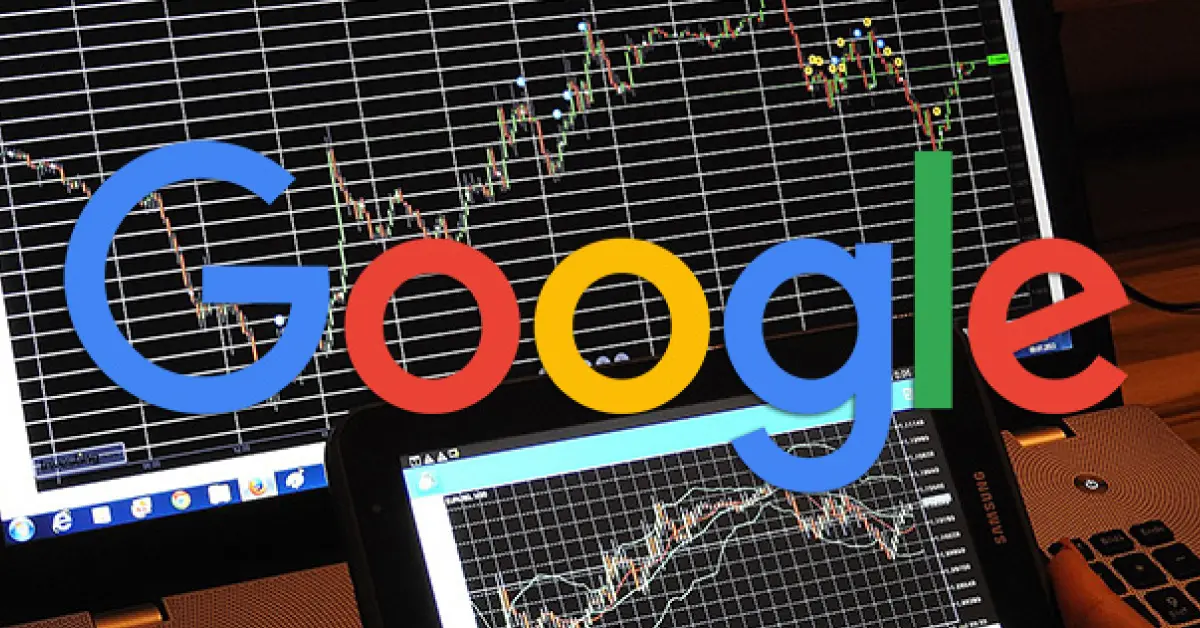
Google Suggest - August 1, 2008
Google introduced Suggest (in a major update to their logo-and-a-box home page). In this feature, displaying suggested searches in a dropdown below the search box when users typed their questions. Later, Suggest would be powered by Google instant.
2007 Updates
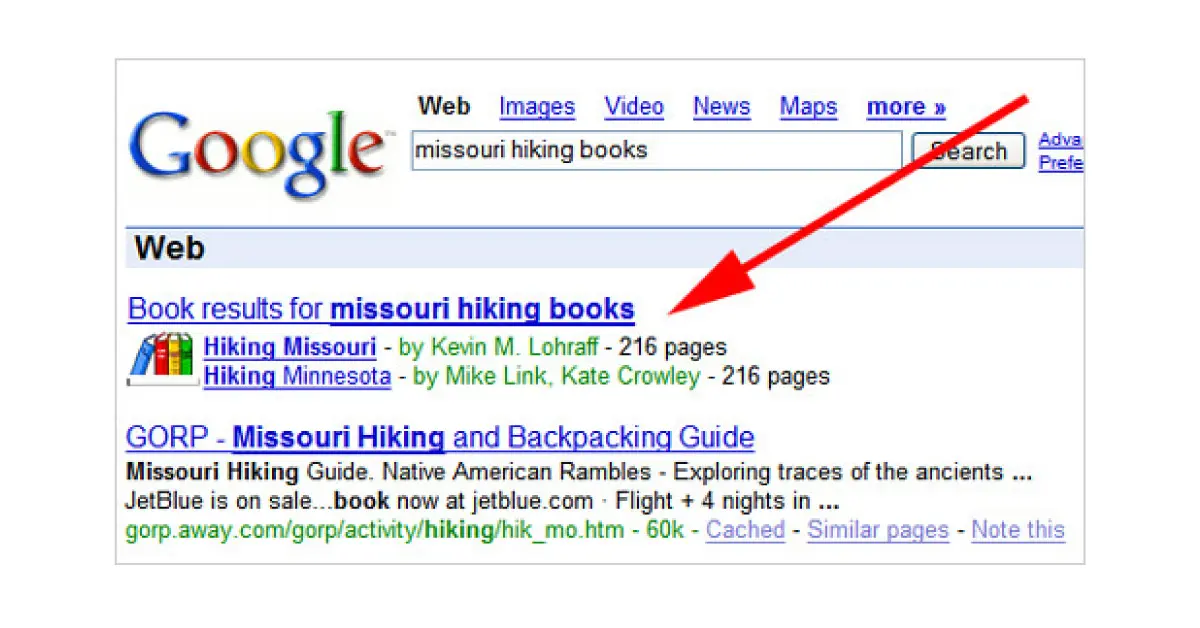
Universal Search - May 1, 2007
With the launch of its "Universal Search" system, Google has introduced the most major update to its search results ever. This method combines results from its news, video, pictures, local, and book search engines with those it obtains by crawling web pages. Universal search update 2007 was a major change in the way Google provides search results. The update made it possible for users to search for content in different languages and formats on the same page.
To date, the update has made it easier for people to find what they are looking for online, as well as more convenient to use Google.
2005 Updates
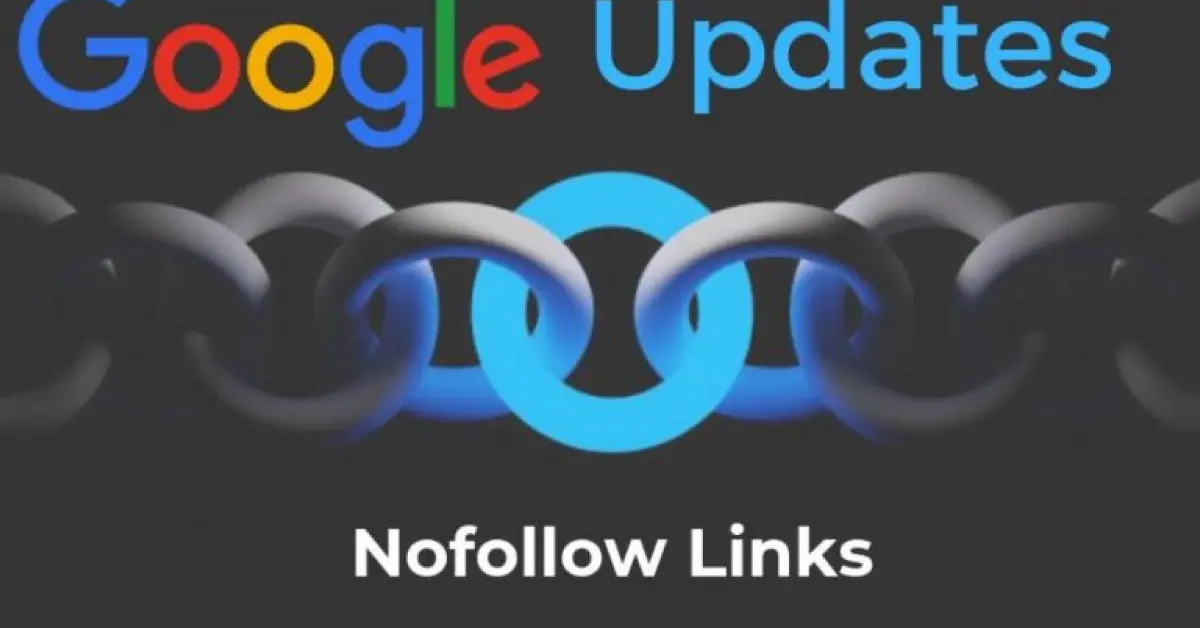
No Follow Update - January 1, 2005
Google, Yahoo, and Microsoft together introduce the "nofollow" feature to prevent spam and manage the quality of outbound links. Nofollow assists in removing unverified links, such as spamming blog comments. Although this adjustment is not a typical algorithm update, it progressively has a major effect on the link graph.
The link would look like this when the nofollow feature was added.
<a href="http://www.abc.com/page.html" rel="nofollow">Visit My Page</a>
Bourbon Update - May 1, 2005
Google has never officially named this update, but it is often referred to as the Bourbon Update(a major change to the way Google ranked pages in its search engine). It was first announced in a blog post by Matt Cutts, who referred to it as the "Bourbon Update."
One of the objectives was to find spam pages and remove them from the index. It should also enhance the way PageRank and backlinks are updated. Another essential aspect was the identification of duplicate content. Further, it mentioned that after the update, the search engine concentrated more on the overall quality of the Internet project and less on the quality of the individual pages.High-quality backlinks have become more significant now.The index states that links pointing to empty pages will have a negative effect on a website's rating. The page that gets the link is affected.
Personalized Search - June 1, 2005
The 2005 launch of personalized search pulled directly from users' search histories to automatically modify results, unlike earlier attempts at personalization that required individual settings and profiles. Initially having little effect, Google would go on to employ search history for a variety of purposes.
Google search has been improved with personalized search, which prioritizes results based on previous searches. When it's obvious that certain results are the most relevant to you, Personalized Search moves them closer to the top after learning from your search history and the search results you've clicked on.
You may browse and control your history of previous searches and the search results you've clicked on using the Search History tool, is a feature of Personalized Search. Your personalized search results will get better over time as your search history grows.
XML Sitemaps - June 1, 2005
Bypassing traditional HTML sitemaps, Google allowed webmasters to upload XML sitemaps through Webmaster Tools, allowing SEOs direct (although indirect) control over crawling and indexation.(Enrollment is free. Although acceptance is not guaranteed, Google is hopeful that the new technique would enable it to more effectively acquire sites than traditional crawling alone enables).
Jagger Update - October 1, 2005
In a series of updates, Google primarily targeted low-quality connections, such as paid links, link farms(PBN), and reciprocal links. Jagger(like other significant Google algorithm updates) was released in at least three stages, between about September to November of 2005, with October seeing the biggest impact.
Google made a lot of changes to its algorithm. primarily influencing a website's refresh rate, content size, and backlink profile, along with a few other technical aspects.
Google Local/Maps Update- October 1, 2005
Google incorporated its Maps data into the Local Business Center in March 2005 after introducing the LBC and urging companies to update their information, a move that would ultimately lead to a number of improvements in local SEO.
Users can get relevant information through Google Local, which also offers draggable maps, satellite imagery, keyboard shortcuts, accurate driving directions, and other helpful features. A comprehensive local search and mapping solution, Google Local integrates mapping data with relevant local data from Google's web index and business listings like Yellow Page directories.
Access to local and geographic data is part of Google's ongoing attempt to organize the world's information and make it universally usable. Google will keep expanding Google Local's search and mapping capabilities as the product develops.
Big Daddy Update - December 1, 2005
Big Daddy was, technically speaking, an infrastructure update (known as a significant infrastructure improvement). The update started in 2005, but it wasn't finished until March 2006. The update concentrated on redirects, URL canonicalization, and other technical issues, which means this update changed the way Google handled these concerns.
2004 Updates
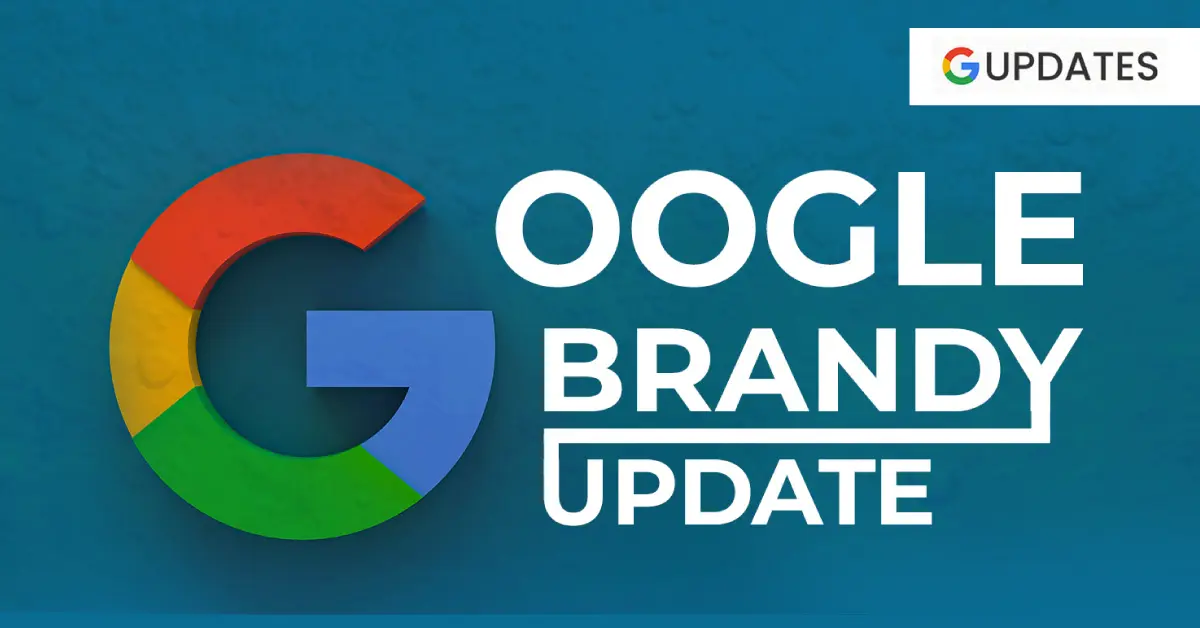
Brandy Update - February 1, 2004
A variety of changes occurred, including a massive index expansion, Latent Semantic Indexing Introduced, Concept of link neighborhood introduced and increased attention to anchor text relevance.
- Website pages that Google had mistakenly removed are now beginning to reappear.
- Websites misused blogs to obtain as many links as they could. Such Websites suffered penalties or were removed from the index.
- Some big sites that were not affected by the recent updates were permanently deleted from the google index.
- Indexing of Dynamic Websites.
2003 Updates

Boston Update - November 1, 2003
- Announced at SES Boston (a Northeastern engineering science conference),this update was planned as monthly algorithm updates for better user experience.
- First few updates came in a combination resulting in a massive google dance.
- After frequent unexpected changes in ranking this update idea was dropped.
Fritz Update - July 1, 2003
With the "Fritz" upgrade, the monthly "Google Dance" finally came to an end. Google switched to a gradual strategy rather than a complete rebuild of the index once every month. The index was now changing daily.
Florida Update - November 1, 2003
- The Google team revealed that they were using statistical link analysis (Statistical analysis for links is the process of displaying the characteristics of a webpage or website on a graph. The average number of outbound links per web page and the proportion of outbound links with keyword-rich anchor text may be calculated) to eliminate spam websites in a link analysis algorithm.
- Referred to as the first major algorithm upgrade that caused many innocent, non spam sites to lose rankings.
- These sites were classified(marked) as false positives.
- Low-quality websites using black hat SEO techniques were taken over by Google.
2000 Updates
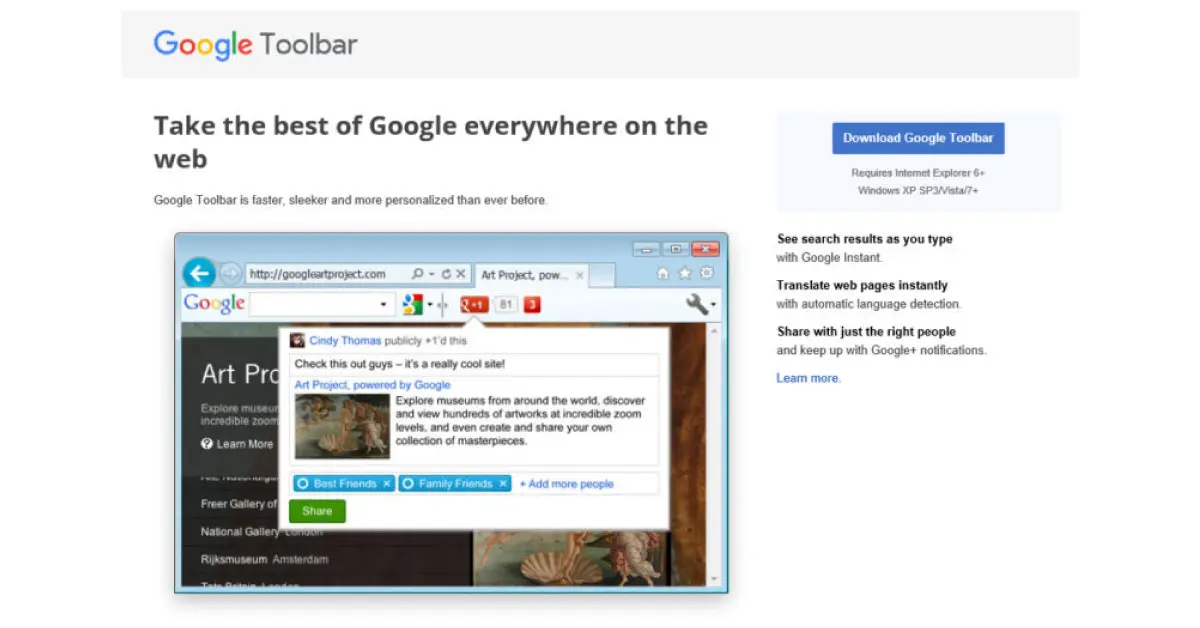
Google Toolbar - December 1, 2000
Google introduced Toolbar PageRank along with their browser toolbar, ensuring SEO fights for years to come (TBPR). The Google Dance (The phrase "Google Dance" was created to characterize the massive rank changes that used to happen when Google updated its ranking algorithm once a month) started as soon as webmasters tuned in to TBPR.
Features of the Google Toolbar:
- Even if the website doesn't have its own search engine, you can still browse its pages
- Instead of Utilizing the browser's "find" tool, automatically find search phrases on any online page
- Find search terms by highlighting each word on a web page with a different color.
- In the event a link is broken or a page has been taken down, directly access Google's cached version of the website.
- Look up relevant websites/Search for Related Web Pages.
- Utilizing Google's renowned PageRank(TM) technology, automatically identifies the significance of each page being browsed.
- Search from any website on the Internet across more than 1.3 billion web pages.

Author Sachin Gupta - Digital Marketing Consultant
Website: www.sachingupta.in
Read More: About Sachin Gupta








